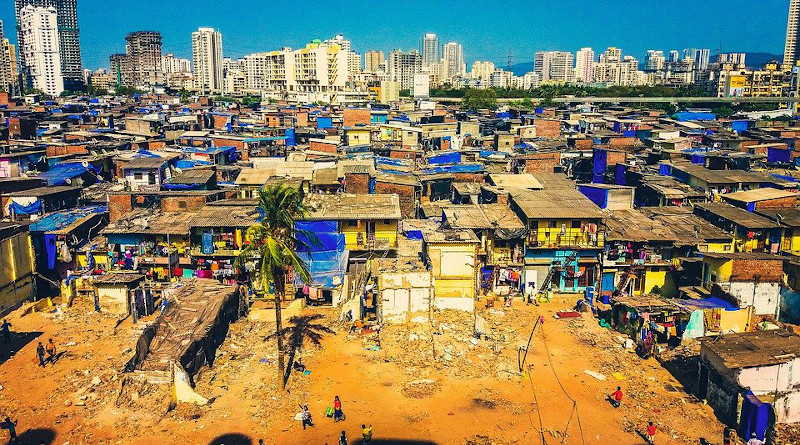COVID-19 Hitting India’s Poor The Hardest – Analysis
By Nikita Kansal*
On 6 May 2021, India reported more than 414,000 new cases of COVID-19, which was the world’s largest single-day record. The total tally of cases in India has now surpassed 24 million, second only to the United States. India’s total reported fatalities are over 260,000, but experts suggest this is a vast undercount in a country of more than 1.3 billion people.
As a second wave wreaks havoc throughout the country, the public healthcare system is on the brink of collapse and thousands of afflicted citizens have been abandoned by the state. Those belonging to low-income categories are disproportionately impacted by an overwhelmed healthcare infrastructure.
About 60 per cent of India’s population live below the poverty line and one third live in slums, without access to basic services like running water, indoor toilets and electricity. On average, life in the slums means living in a 9-square-metre shanty shared by 8–10 people and the use of community toilets, often located next to open sewers. COVID-19 guidelines recommend social distancing and sanitation maintenance, but this remains unachievable for a large part of India’s population. The rapid rise of cases in the country has highlighted the need to fix infrastructure problems from the ground up.
On 25 March 2020, India’s government ordered a nationwide lockdown which lasted for 75 days, making it one of the longest lockdowns ever imposed. But this was devastating for the economy, 80 per cent of which is supported by the informal sector. After a phased reopening, Prime Minister Narendra Modi declared victory over the pandemic in January 2021, despite concerns about a second wave from most experts.
The government took steps which also reflected a post-pandemic attitude, including allowing Kumbh Mela — a Hindu festival that takes place on the banks of the Ganges River — to be held in the state of Uttarakhand. An estimated 9 million devotees attended the festival in April 2021, just as the second wave of COVID-19 was beginning to surge.
Religious festivals like Kumbh Mela involve community bathing in the Ganges and communal eating, which can’t accommodate COVID-19 guidelines like social distancing. These factors made the festival a hotbed for infections, as hundreds of returning devotees tested positive for the virus.
Mass political rallies for state elections held across India also further aggravated the situation. Footage emerged from states like West Bengal where thousands gathered, flouting all guidelines. Even though political leaders were wearing masks and maintained social distance to an extent, no arrangements were made for the attendees to follow COVID-19 protocols. West Bengal reported its largest single day spike of 17,411 cases as a direct result of these political campaigns.
The government did not prioritise India’s vaccination project, heralded as the world’s largest. Despite contributing 21 per cent to the global volume of COVID-19 vaccine doses, India has only fully inoculated 1.6 per cent of its own population. After exporting almost 193 million COVID-19 vaccine doses, India now faces a severe shortage. As Indians rush to get vaccinated, the price of the vaccine has been set at Rs 600 (US$8) for one shot.
The average monthly income of an agricultural household in India was estimated at Rs 6426 (US$87), based off the latest data from 2013, meaning a household would have to pay 50 per cent of its monthly income to vaccinate all household members. This means that India’s vaccination project excludes most of the country’s population, with only the upper-middle class and elite being able to afford it.
India’s poor have not just been excluded from the vaccination project. The average cost of COVID-19 treatment is Rs 100,000 (US$1362) to Rs 200,000 (US$2725) for 10 days, even in public hospitals, while the average monthly wage is Rs 32,800 (US$447). This means roughly 80 per cent of the population cannot afford treatment.
An acute shortage of medical equipment and oxygen cylinders in the country exacerbates the issue. A thriving black market has sprung up for oxygen, plasma and anti-viral drugs like Remdesivir. Oxygen cylinders — which in pre-pandemic times cost anywhere between Rs 10,000 (US$136) to Rs 14,000 (US$190) — are being sold on the black market for as much Rs 90,000 (US$1226).
The healthcare system is stretched thin with the heavy onset of cases and the poor are left with no means to fend for themselves. But some countries have come to India’s aid. Pakistan based not-for-profit Edhi Foundation wrote to Modi offering to send a fleet of 50 ambulances, while Thailand and Singapore have sent cryogenic oxygen tanks to alleviate the oxygen crisis.
As thousands die outside hospitals gasping for oxygen and medication, India finds itself in a largely self-generated crisis. The poor do not have the luxury to abide by government guidelines to ‘stay home to stay safe’. The Modi government needs to establish a nationally coordinated plan that caters for all, including the most vulnerable and marginalised, if India is to have any chance of beating this wave of COVID-19.
*About the author: Nikita Kansal is a lawyer based in Delhi and is the host of a legal policy podcast.
Source: This article was published by East Asia Forum

